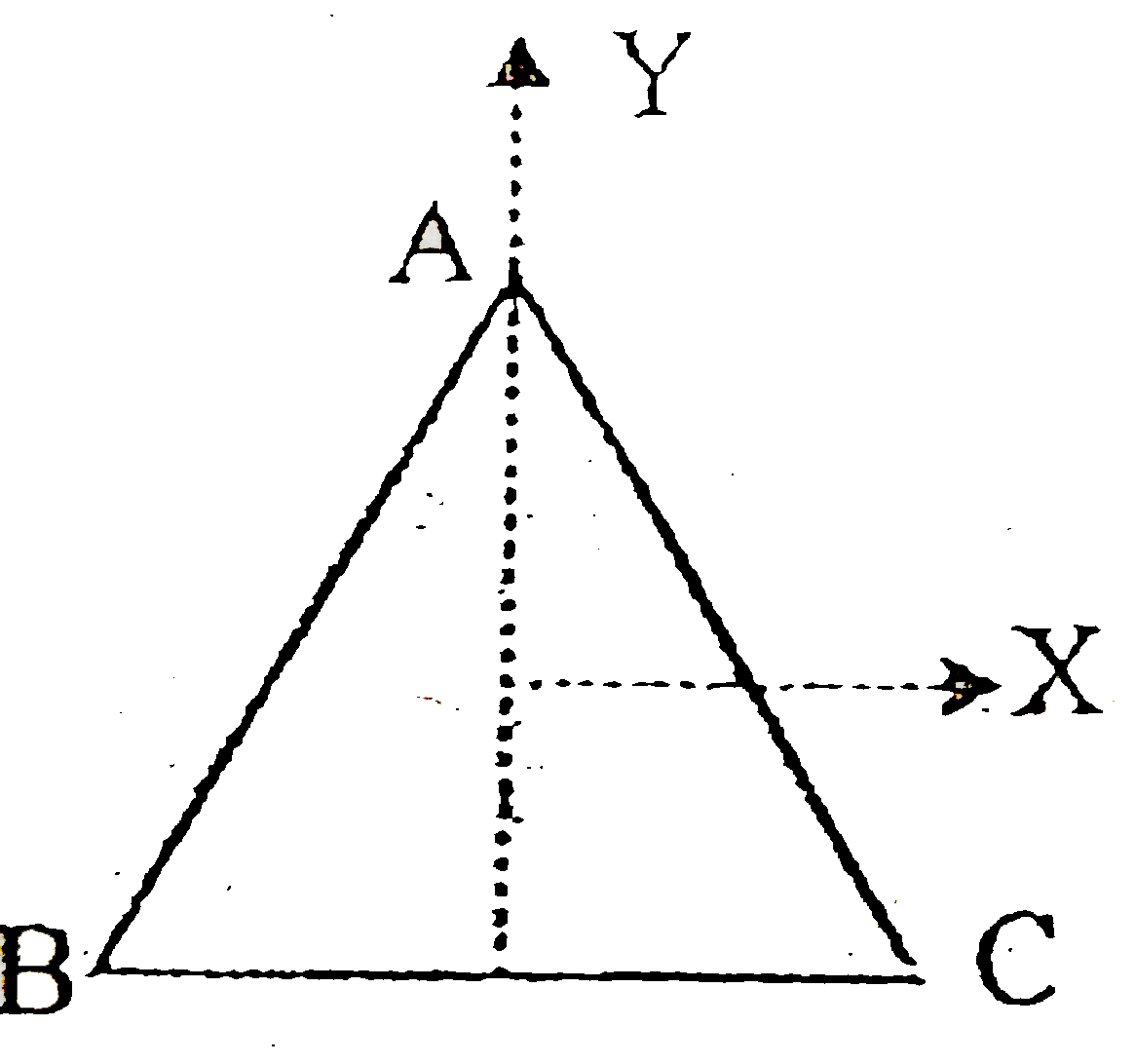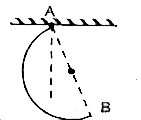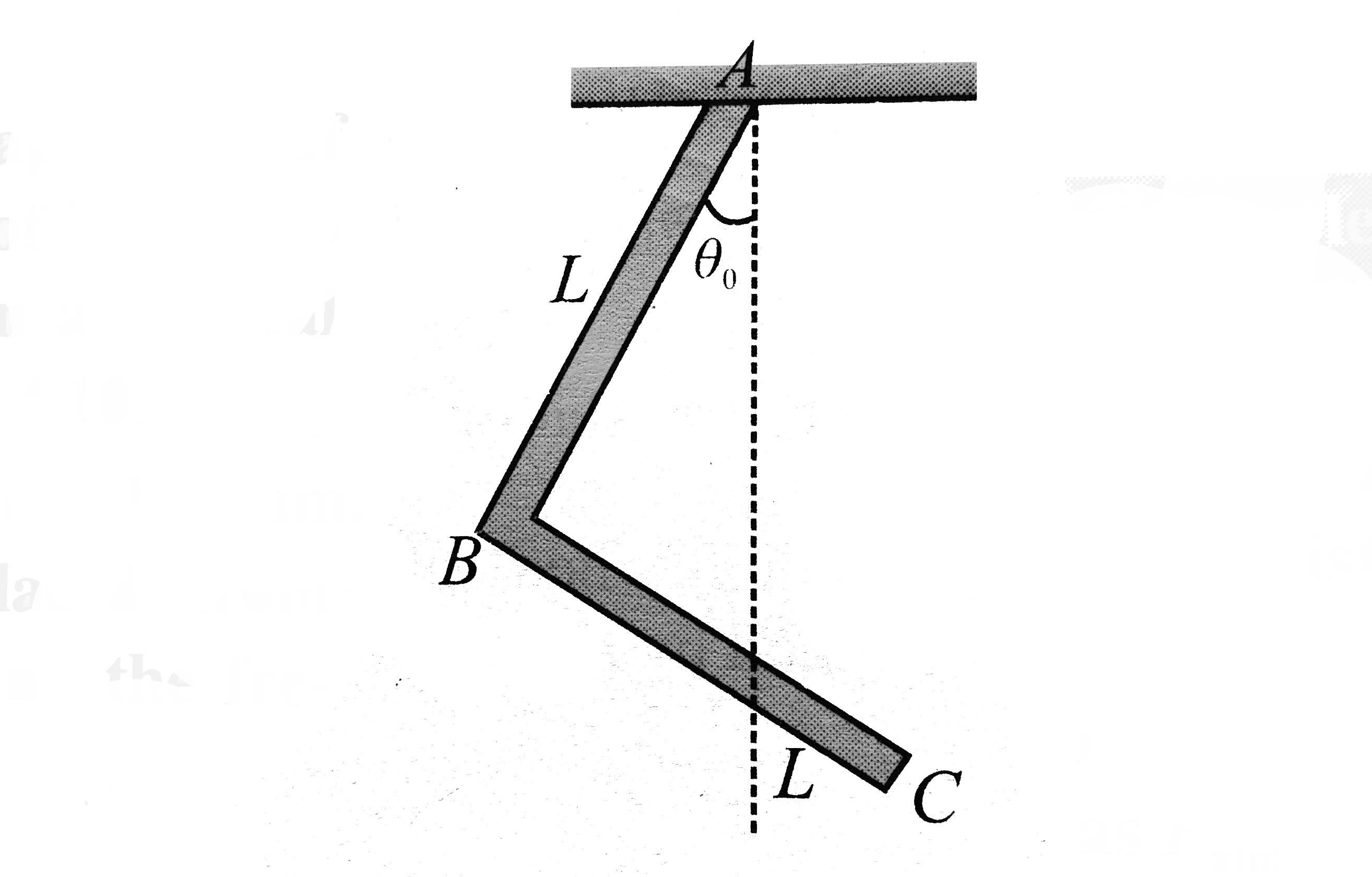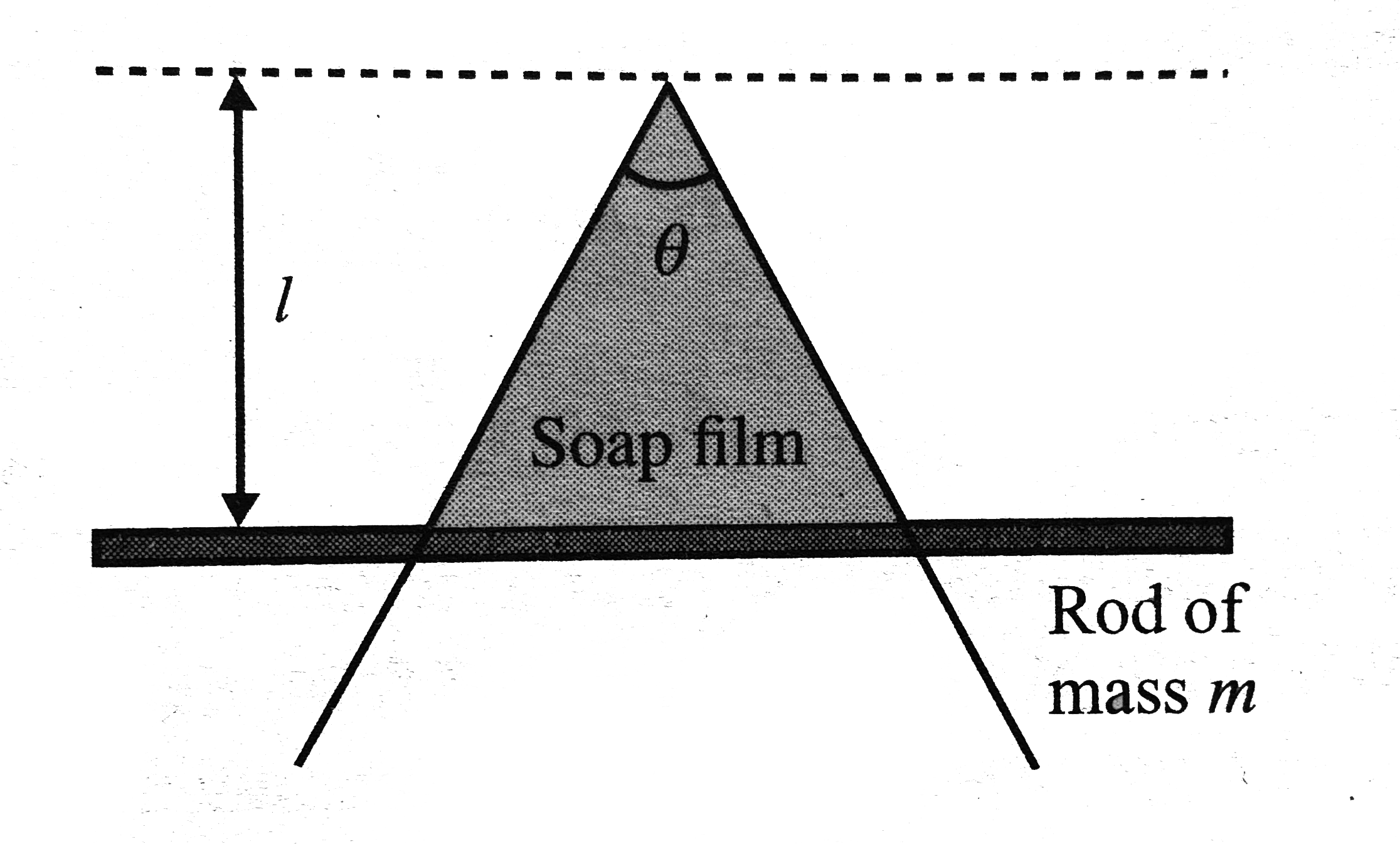A wire frame in the shape of an equilateral triangle is hinged at one vertex so that it can swing freely in a vertical plane, with the plane of the always remaining vertical. The side of the frame is . The time period in seconds of small oscillations of the frame will be-
The correct Answer is:D
To solve the problem of finding the time period of small oscillations of a wire frame in the shape of an equilateral triangle hinged at one vertex, we can follow these steps:
Step 1: Understand the Geometry of the System
The wire frame is an equilateral triangle with each side measuring 1√3 m. The triangle is hinged at one vertex, allowing it to swing freely in a vertical plane.
Step 2: Identify the Moment of Inertia
To find the time period of oscillation, we need to calculate the moment of inertia I of the triangular frame about the hinge point. The moment of inertia for each side of the triangle can be calculated using the parallel axis theorem.
1. The moment of inertia of a rod about one end is given by:
Irod=13ml2
where l is the length of the rod.
2. For the equilateral triangle, we have three sides. The moment of inertia for each side about the hinge point needs to be calculated.
Step 3: Calculate the Moment of Inertia for Each Side
1. For the two sides meeting at the hinge:
I1=13m(1√3)2=13m⋅13=m9
(Each of these contributes m9 to the total moment of inertia.)
2. For the opposite side (using the parallel axis theorem):
- The distance from the hinge to the center of mass of this side is 1√3.
- The moment of inertia about the center of mass is:
Icm=13m(1√3)2=m9
- Applying the parallel axis theorem:
I2=Icm+md2=m9+m(1√3)2=m9+m3=4m9
Step 4: Total Moment of Inertia
The total moment of inertia I about the hinge is:
I=I1+I1+I2=m9+m9+4m9=6m9=2m3
Step 5: Calculate the Time Period
The time period T of a compound pendulum is given by:
T=2π√Imgh
where h is the distance from the hinge to the center of mass of the triangle. The center of mass of an equilateral triangle is located at a distance of a√3 from the base, which is 13√3 m from the hinge.
Substituting I and h:
T=2π
⎷2m3mg⋅13=2π√2g
Step 6: Substitute g
Assuming g=10m/s2:
T=2π√210=2π√15=2π√5
Final Answer
Thus, the time period of small oscillations of the frame is:
T=2π√5 seconds
The wire frame is an equilateral triangle with each side measuring 1√3 m. The triangle is hinged at one vertex, allowing it to swing freely in a vertical plane.
To find the time period of oscillation, we need to calculate the moment of inertia I of the triangular frame about the hinge point. The moment of inertia for each side of the triangle can be calculated using the parallel axis theorem.
Irod=13ml2
where l is the length of the rod.
1. For the two sides meeting at the hinge:
I1=13m(1√3)2=13m⋅13=m9
(Each of these contributes m9 to the total moment of inertia.)
- The distance from the hinge to the center of mass of this side is 1√3.
- The moment of inertia about the center of mass is:
Icm=13m(1√3)2=m9
- Applying the parallel axis theorem:
I2=Icm+md2=m9+m(1√3)2=m9+m3=4m9
The total moment of inertia I about the hinge is:
I=I1+I1+I2=m9+m9+4m9=6m9=2m3
The time period T of a compound pendulum is given by:
T=2π√Imgh
where h is the distance from the hinge to the center of mass of the triangle. The center of mass of an equilateral triangle is located at a distance of a√3 from the base, which is 13√3 m from the hinge.
T=2π
⎷2m3mg⋅13=2π√2g
Assuming g=10m/s2:
T=2π√210=2π√15=2π√5
Thus, the time period of small oscillations of the frame is:
T=2π√5 seconds
Topper's Solved these Questions
- BOOK - DC PANDEY ENGLISHCHAPTER - SIMPLE HARMONIC MOTIONEXERCISE - Level 2 More Than One Correct8videos
SIMPLE HARMONIC MOTION
- BOOK - DC PANDEY ENGLISHCHAPTER - SIMPLE HARMONIC MOTIONEXERCISE - Level 2 Comprehension2videos
SIMPLE HARMONIC MOTION
- BOOK - DC PANDEY ENGLISHCHAPTER - SIMPLE HARMONIC MOTIONEXERCISE - Level 1 Subjective39videos
SIMPLE HARMONIC MOTION
- BOOK - DC PANDEY ENGLISHCHAPTER - SEMICONDUCTORS AND ELECTRONIC DEVICESEXERCISE - More than One Option is Correct3videos
SEMICONDUCTORS AND ELECTRONIC DEVICES
- BOOK - DC PANDEY ENGLISHCHAPTER - SOLVD PAPERS 2017 NEET, AIIMS & JIPMEREXERCISE - Solved paper 2018(JIPMER)38videos
SOLVD PAPERS 2017 NEET, AIIMS & JIPMER
Similar Questions
A uniform wire frame ABC is in the shape of an equilateral triangle in xy−plane with centroid at the orgin. Then:−
 View Solution
View SolutionA uniform semicircular ring of mass m and radius r is hinged at end A so that it can rotate freely about end A in the vertical plane as shown in the figure. Calculate angle made by line AB with vertical in equilibrium position and time period of small oscillation of ring.
 View Solution
View SolutionThe equation of one side of an equilateral triangle is x−y=0 and one vertex is (2+√3, 5) . Prove that a second side is y+(2−√3)x=6 and find the equation of the third side.
View SolutionA coil in the shape of an equilateral triangle of side 0.02 m is suspended from a vertex such that it is hanging in a vertical plane between the pole pieces of a permanent magnet producing a horizontal magnetic field of 5×10−2T. Find the couple acting on the coil when a current of 0.1 A is passed through it and the magnetic field is parallel to its plane.
View SolutionA coil in the shape of an equilateral triangle of side 0.02 m is suspended from a vertex such that it is hanging in a vertical plane between the pole pieces of a permanent magnet producing a horizontal magnetic field of 5×10−2T. Find the couple acting on the coil when a current of 0.1 A is passed through it and the magnetic field is parallel to its plane.
View SolutionA coil in the shape of an equilateral triangle of side 0.01 m is suspended from the vertex such that is hanging in a vertical plane between pole pieces of a permanent magnet producing a horizontal magnetic field of (4×10−2T).If a current of 1A is passing through it and the magnetic field is parallel to its field,then the torque acting on the coil is
View SolutionA coil in the shape of an equilateral triangle of side 0.01m is suspended from the vertex such that it is hanging in a vertical plane between pole pieces of a permanent magnet producing a horizontal magnetic field of 4×10−2 T. If a current of 1A is passing through it and the magnetic field is parallel the magnetic field is parallel to its plane, then the torque acting on the coil is
View SolutionAn L-shaped bar of mass M is pivoted at one of its end so that it can freely rotate in a vertical plane, as shown in the figure
a. Find the value of θ0 at equilibrum
b. If it is slighly displacement from its equilibrum position, find the frequency of oscillation.
 View Solution
View SolutionA copper wire is wound on a wooden frame, whose shape is that of an equilateral triangle .If the number of turns of the coil per units length of the frame remains the same but the linear dimension of the frame is increased to 3 times , then the self inductance of the coil:
View Solution
A wire is bent an an angle θ. A rod of mass m can slide along the bended wire without friction as shown in Fig. A soap film is maintained in the frame kept in a vertical position and the rod is in equilibrium as shown in the figure. If rod is displaced slightly in vertical direction, then the time period of small oscillation of the rod isView Solution

